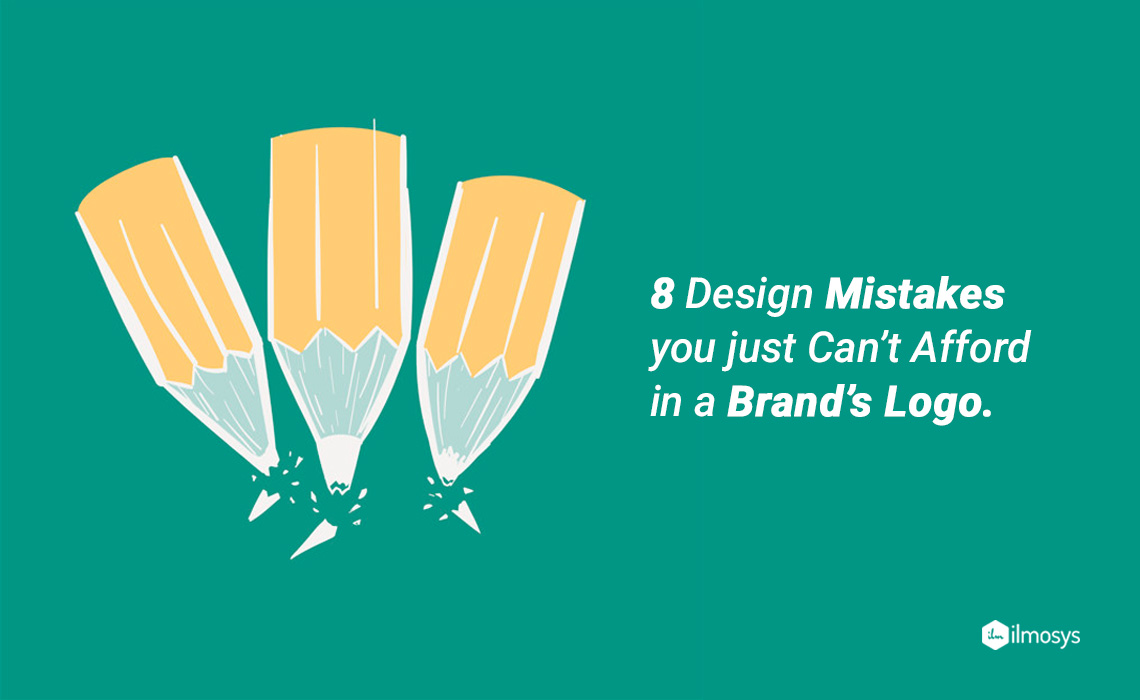Designing is an art, intricate and detailed. Designers who create logos for bands are shouldering quite a lot of responsibility because they conceive the face of the brands into an individual identity. Therefore, designers must find it essential to equip themselves with not only the tips and tricks into developing the perfect logo for a brand, but there should also be awareness for the “Don’ts” and the potential mistakes essentially avoided that could ruin the logo.
For this purpose, we have compiled eight of such common mistakes that many designers accidentally overlook in their conception. Whether you are the owner of a business startup looking for some clues, a designer or a general visitor, these “mistakes” are going to give you real insight into knowing what should be and should not be done while creating a logo.
1. Not making it flexible enough
Flexibility is pivotal for a successful logo design. It should be kept in mind that logos are designed to appear on a number of surfaces – from smooth to horizontal or vertical surfaces, as well as minimized to print on small products such as pens and wallets. In order to keep the logo proportional for all kinds of variations, make sure the finalized logo design is such that it can print itself on any space and remain as striking as in the original size.
2. Poor font, typography and visibility
Poor typography can make or break a logo design, because it is the typography and font that the audience will read when viewing the logo. Font choice, on the other hand, must be researched and selected without any rush. Importantly, the logo must also be clear when it is printed in black and white. This is of grave significance because several logo designs fail to retain their visibility and clarity when they appear in a newspaper or any other material preferring to print without color. Just not without color – it should also support all color systems because once the logo is out, nobody is going to ask you your logo’s color compatibility before passing it through mediums. Hence, make certain your logo design nails any publication.
3. It is not original
Although this point is strictly understood, it was included in the list because this one characteristic of any logo goes without saying is obligatory. Despite the understanding of making designs distinctive and completely original, many logos around us bore a slight resemblance to others. At any cost, dispense the notion that there is even a modicum of compliance in agreeing to similarity. A logo’s destiny is dependent on its uniqueness.
4. It is offensive
Perhaps the next element in importance to originality is a logo being respectful to the market. Rivalry is s powerful thing, and while most of the designers or the owners will not deliberately put in offensive shapes, colors or captions in their logo design, it can creep into the final conception discreetly.
Apart from this, logos can appear offensive or discriminatory unintentionally to the market if it involves those certain shapes, or topography that convey silent messages. You need to double check that your final design is not, in any way, displeasing any viewer, before you share it globally.
5. Too much abstract
While abstracts are a handy way of making a design more appealing and attractive, it is not necessary that it will work the same with logos. Since we are talking about emblems that actually become the face of a product, we need to make sure that it is indelible and very memorable for the customers. Anything simple is easier to remember than something that comprises of a lot details. Too much color, special effects, and abstract art are the recipe to a weak logo. Try maximum to avoid it.
6. Deciding on a monogram for the logo
Settling on the monogram as the logo of a company’s name is amateur designing. Designers and the team working on creating the logo often make this common mistake of opting for the monograms to print in their logos. This may appear a smart solution, and designers can go for this route, but it is unprofessional to just settle on nothing but the monogram. For instance, when Victoria’s Secret becomes V&S in the logo, it is denied the right to convey anything important or original to audience; thereby spoiling the purpose of a logo. With monograms, it gets difficult to build credibility and relevance – so explore this route but pair it with goals and a message.
7. Clichéd and too trendy
Avoid clichés in your logo as much as you can, because with a light bulb for ‘ideas,’ a speech bubble for ‘discussion,’ and other common graphics, you cannot achieve the distinctiveness we talked about earlier in this article. While brainstorming, discard these visuals as soon as they come to your mind and think out of the box. As far as following the trend is concerned, it is wise to be aware of them but an exclusive reliance on those trends is hands down a blunder. If your logo is solely driven by what is going trendy that year, it will soon lose its steam in the upcoming time. Your company cannot change logos at every two years – it ruins the image effortlessly.
8. Not delivering cleanest logo files
Before delivering the files to your client, make sure they are the “cleanest.” It often happens that a file delivered to the client by the designer comprises of pixel and symmetrical issues, such that when the designed logo is blown up on a truck, it comes off teary, rugged and unprofessional. If the logo has curves, node points, symmetry – triple check that they are perfect and do not overlap. Your entire career is at stake if your logo files are not “clean” when being delivered.




